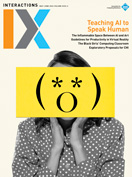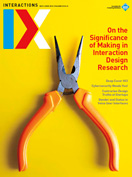Authors:
Matthew Mosher, David Tinapple, Enrique Tomas, Keina Konno, Richi Owaki, Yoshito Onishi, Ryo Kanda, Sheep, Akiko Takeshita, Tsubasa Nishi, Naoko Shiomi, Kyle McDonald, Satoru Higa, Kazuhiro Jo, Yoko Ando, Kazunao Abe, Takayuki Ito, Shannon Cuykendall, Ethan Soutar-Rau, Thecla Schiphorst
 1. What We Have Lost/What We Have Gained
1. What We Have Lost/What We Have Gained
This project investigates embodied electronic music performance using large upper body movements. It also explores how to transform viewers into performers, participants, and players through tangible interactions with a sculpture. In doing so, it explores the experience of using one's physical body to manipulate the digital representation of another person's body.
The project presents an interface that is both familiar to musicians and visible to a live audience. Originally conceived as a MIDI drum pad, the object now serves as a pressure-sensitive multitouch audio-video playback device that uses infrared presence detection.
http://matthewmosher.org/portfolio_entry.php?art_id=78
https://www.youtube.com/watch?v=rMy0p4P9owo
Matthew Mosher, University of Central Florida
[email protected]
David Tinapple, Arizona State University
 |
A user interacting with the sculpture. |
A "tangible score" is a tactile interface for musical expression that incorporates a score into its physical shape, surface structure, or spatial configuration. With sound as a continuous input signal, both synthesis and control are available simultaneously through direct manipulation of the engraved patterns on the physical score. Every interface is conceived from a different graphical score. These tactile patterns suggest specific gestural behaviors due to the different affordances and constraints of the patterned object. Sound is generated through polyphonic concatenative synthesis driven by real-time analysis and classification of input-signal spectra.
http://interface.ufg.ac.at/tmg/projects/tangible-scores/
Tomás, E. and Kaltenbrunner, M. Tangible Scores: Shaping the inherent instrument score. Proc. of NIME 2014, 609–614.
E. Tomás. Tangible Scores Installation. Proc. of the 10th International Conference on Tangible, Embedded, and Embodied Interaction. ACM, New York, 2016.
Enrique Tomas, Interface Cultures Lab, University of Art and Design Linz, [email protected]
 |
Manipulating sound via tactile patterns on a tangible score. |
 |
Tangible Scores installation. |
 3. Dividual Plays Experimental Lab
3. Dividual Plays Experimental Lab
"Dividual Plays Experimental Lab" is an extract from the dance piece Dividual Plays. Dividual Plays was produced as the first research outcome of Reactor for Awareness in Motion (RAM), a research project we have been involved in since 2010. "Dividual Plays Experimental Lab" consists of essential elements of Dividual Plays: virtual environments for dance "scenes," a programming toolkit (RAM Dance Toolkit), and a motion-capture system (MOTIONER). With these systems, the lab allows the visitors to explore and create their own body movements to correspond with the experience of the dancers in Dividual Plays.
http://special.ycam.jp/ram/en/
Konno, K., Owaki, R., Onishi, Y., Kanda, R., Sheep, Takeshita, A., Nishi, T., Shiomi, N., McDonald, K., Higa, S., Jo, K., Ando, Y., Abe, K., and Ito, T. Dividual Plays Experimental Lab: An installation derived from Dividual Plays. Proc. of the 10th International Conference on Tangible, Embedded, and Embodied Interaction. ACM, New York, 2016.
Keina Konno, Richi Owaki, Yoshito Onishi, Ryo Kanda, Sheep, Akiko Takeshita, Tsubasa Nishi, Naoko Shiomi, Kyle McDonald, Satoru Higa, Kazuhiro Jo, Yoko Ando, Kazunao Abe, and Takayuki Ito
[email protected]
 |
A motion-capture system studies how dancers' movements are shaped when interaction is established between the virtual environment and dancers in the real world. |
POEME: A Poetry Engine is an interactive installation that invites participants to create poetry through movement. We explore the relationship between bodily, mechanical, and digital interpretations of movement while referencing the choreographed routines of mass transit. Each participant receives a virtual ticket that grants them entrance to a private performance space. The participant's poems and sensor readings are conveyed outside of the space on a public display reminiscent of a departure board. The installation grew out of designing POEME, a website that allows users to create movement poetry with their mobile device.
Cuykendall, S, Soutar-Rau, E., Schiphorst, T. POEME: A poetry engine powered by your movement. Proc. of the 10th International Conference on Tangible, Embedded, and Embodied Interaction. ACM, New York, 2016.
Shannon Cuykendall,
[email protected]
Ethan Soutar-Rau,
[email protected]
Thecla Schiphorst,
[email protected]
School of Interactive Arts + Technology, Simon Fraser University
©2016 ACM 1072-5220/16/05 $15.00
Permission to make digital or hard copies of all or part of this work for personal or classroom use is granted without fee provided that copies are not made or distributed for profit or commercial advantage and that copies bear this notice and the full citation on the first page. To copy otherwise, to republish, to post on servers or to redistribute to lists, requires prior specific permission and/or a fee.
The Digital Library is published by the Association for Computing Machinery. Copyright © 2016 ACM, Inc.







Post Comment
No Comments Found